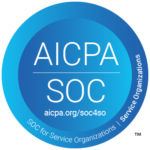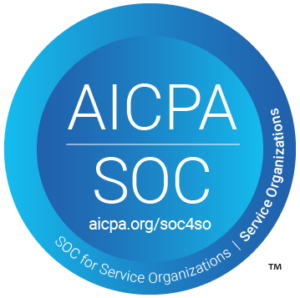Price increases are one of the toughest conversations an MSP can have. No one wants to risk losing clients, yet staying flat year after year quietly erodes profit. The best insights about how to navigate that balance often come from the people living it every day.
Over breakfast at Pax8 Beyond, one MSP owner summed it up perfectly:
“We use MSPCFO. The only regret I have is that we didn’t implement it five months earlier. We could have used it for those clients who pushed back on the price increase.”
That comment stuck with me—not because it was about justification, but because it revealed a deeper truth. When price increase season comes around, the MSPs who win aren’t the ones with the best email template or the most persuasive pitch. They’re the ones who know their numbers.
Knowing how much or how little profit you make from a client before the conversation gives you a level of confidence that can’t be overstated.
Four Price Increase Strategies
At Pax8 Beyond, Jonathan Mack, an executive coach with Pax8 Academy, led a standout session on how to raise managed service prices the right way. Jonathan, a former MSP business owner for nearly two decades, knows firsthand how nerve-wracking price increases can be. He shared his experience in raising prices by 40% during the Great Recession and, despite losing plenty of sleep, not losing a single client.
He outlined four strategies MSPs typically use to raise prices:
Strategy One
Pick an amount and apply it equally across your client base. It’s simple and better than doing nothing, but without data to justify it, the conversation can feel arbitrary.
Strategy Two
Use the inflation rate as a guide, applying the same percentage to each client. It’s more structured, but still one-size-fits-all.
Strategy Three
Identify the clients who are underpriced, high-maintenance, or unprofitable, and raise their rates based on the financial outcome you want.
Strategy Four
The best-in-class approach combines both inflation awareness and profitability targeting. Identify which clients need rate changes, apply inflationary adjustments where appropriate, and align your communication to the value you deliver.
How to Stack Rank Your Clients on Profitability
To execute either the third or fourth strategy, you need a reliable way to calculate client profitability.
The best way is to measure each client’s service gross margin or “contribution” and stack rank them from worst to best. This can be difficult in some PSAs that don’t separate products and labor, but that’s where MSPCFO simplifies the process.
Another powerful metric is shadow-billable hours—the number of hours clients actually use divided by the hours included in their managed services plan. Multiply those hours by your standard hourly rate, and you’ll see which clients are consuming far more than they’re paying for. Those are the clients to prioritize first for price increases.
You can also analyze labor revenue and labor margin per client to rank them by profitability. MSPCFO’s free Insights Report instantly shows your top 5 and bottom 5 clients—a quick, data-backed starting point for price increase conversations.
And don’t forget the other end of the curve: clients who rarely need support. These “quietly profitable” clients can actually be flight risks if they don’t feel your value. Before you raise their prices, ramp up account management activities like quarterly or annual business reviews to reinforce engagement.
How to Determine How Much to Raise Rates
Once you’ve identified which clients to adjust, the next question is “how much?”
Start with the end in mind: your target service gross margin. Organizations like Service Leadership give you great benchmarks, but your exact target depends on your business model and historical positioning. In anOffice Hours conversation earlier this year, Rex Frank, Vice President of Pax8 Academy said when you strip out the service overhead, and just look at the direct cost, the W2 multiple for your technical resources should be around 3x.
Using data in MSPCFO, you can model client-level changes using these steps.
- Identify each client’s current service margin. Go to the Segments Report, select your time frame, add Labor Contribution to the report.
- Export your data into a spreadsheet you can share.
- Create a column with your target margin.
- Calculate the delta—the amount you’d need to raise rates to reach that goal.
This approach ensures every increase is justified, data-driven, and tied to financial outcomes.
A Practical Playbook You Can Run This Month
Jonathan Mack talked about this topic once again during the Pax8 Academy podcast, and shared a few best practices on how to go about price increases.
Step 1 — Data Hygiene (1–3 Days)
Clean data is the foundation of any rate decision. Ensure tools aren’t categorized as labor revenue, confirm labor cost models are accurate, and verify that all time entries are complete and mapped to the correct client.
Step 2 — Generate the List (30–60 Minutes in MSPCFO)
Use MSPCFO’s Insights → Client Profitability report to export your bottom-5 and top-5 clients. Add metrics like shadow-billable and effective hourly rate to see where service usage and margin are misaligned.
Step 3 — Decide the Moves (2 Hours)
Tier your clients:
- Tier A (Top 5): High-margin clients → No immediate change, but schedule QBRs to reinforce value
- Tier B (Stable): Mid-pack clients → Inflationary uplift + light scope cleanup
- Tier C (Critical): Bottom-quartile margin and negative shadow-billable gap → Custom increase to reach target margin
Step 4 — Calculate Amounts (60 Minutes)
For Tier C clients, use MSPCFO’s margin math to identify exact rate changes—or phase them in over two intervals (e.g., 50% now, 50% in six months).
Step 5 — Communicate Like a Partner
Approach each conversation with transparency. Share usage data, outcomes, and service value. Lead with evidence, not emotion.
Step 6 — Close the Loop
Monitor profitability trends post-increase. For clients with operational inefficiencies, launch short improvement sprints and revisit their data in 60 days.
Talking Points You Can Borrow
For data-backed increases:
“Over the last 6 months, your team used an average of X hours/month. If billed hourly, that’s $Z of value. Your current plan is $Y. To maintain your service level, we need to adjust your rate to $X’.”
For inflationary uplifts:
“Our costs—labor, tooling, and security—have increased. To maintain our quality and investment in your success, we’re adjusting your rate by N% starting [Date].”
For high-profit, low-touch clients:
“You don’t need us often, which is a good thing! Let’s align on proactive initiatives—continuity, lifecycle planning, security training—so we continue to deliver measurable value.”
Before You Raise Prices, Know Your Numbers
Jonathan Mack’s Pax8 Beyond session emphasized starting with the end in mind—profit—and investing in your people and processes to sustain premium service. Pax8 Academy’s Client Rating framework and Rate Delta Calculator make the methodology concrete.
MSPCFO makes it actionable: you get the data clarity that lets you move from guessing to managing. Together, Pax8’s framework and MSPCFO’s analytics turn price increases into a confident, repeatable process.
Raising prices isn’t a risk—it’s a responsibility. Done right, it protects your team, your service quality, and your future growth.
Start with data. Know your clients. MSPCFO gives you the insight to act with confidence—because the only regret you should have is not doing it five months earlier.
About MSPCFO
Winner of both the Partner Innovation and Partner Advocate awards at IT Nation Evolve 2022, MSPCFO is a business intelligence platform designed to solve the unique profitability and productivity challenges managed services providers face. Since the application’s introduction in 2014, MSPCFO has helped thousands of MSPs and TSPs in the United States, Canada, APAC, and Europe identify improvement targets that directly boost their bottom line. Founder and CEO Larry Cobrin’s consulting, investment banking, private equity and product management experience coalesced in his development of the MSPCFO software and business model.
Follow MSPCFO
Want to Improve Your Bottom Line?
Schedule Your Personalized Demo





